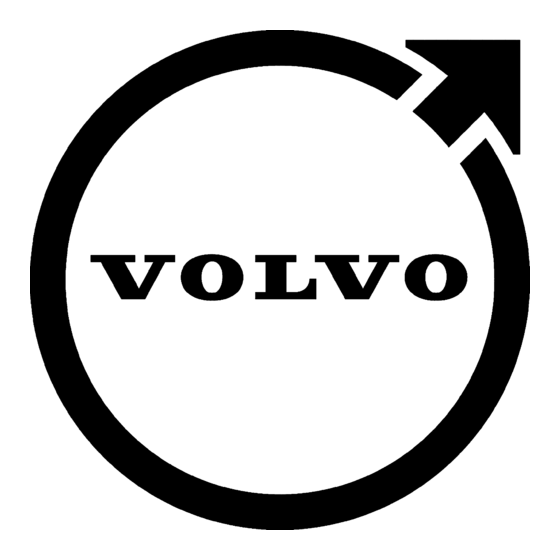
Table of Contents
Advertisement
Quick Links
To obtain the best engine performance, before
adjusting the carburetors, make sure that the
distributor dwell angle and ignition timing are
correct. The ignition timing should be checked
and adjusted by using a stroboscope with the
engine running at rapid idling speed and the
vacuum regulator disconnected.
FUEL SYSTEM
Carburetors
The hollow spindle on the suction chamber piston
i s filled with oil and functions together with the
small damping plunger (3, Fig. 8) as a damper.
This should be topped-up with oil at regular inter-
vals, for example when the engine oil is changed.
Screw off the nut at the top of the suction
chamber, lift up the nut and the damping plunger
and top-up with oil through the hole. Fill only the
centre spindle so that the oil does not run over
when the piston is fitted. Use SAE 20 engine oil.
Fig. 12. Float chamber disassembled.
1. Washers
2. Nut
3. Float chamber cover
4. Strainer with spring
5. Gasket
REPAIR INSTRUCTIONS
6. Float
7. Float chamber
8. Pin
9. Lever
10. Needle valve
I n addition to this, the spark plugs, ignition cables
and other ignition equipment should also be check-
ed. See the correct values in the specifications.
The instructions below concern only the carbure-
tors for the B 16 B engine. The Service Manual
for cars and vans, Part 1, B 16 A Engine should
also be used where applicable.
Fig. 13. Jet unit disassembled.
1. Washer
2. Seal washer
3. Lock nut
4. Spring
5. Adjuster nut
6. Jet
7. Link rod
8. Link
9. Lever
10. Spring
11. Washer
12. Lower jet bearing
13. Seal ring
14. Washer
15. Spring
16. Washer
17. Seal ring
18. Upper jet bearing
19. Washer
Advertisement
Table of Contents

Summary of Contents for Volvo B16B
- Page 1 REPAIR INSTRUCTIONS To obtain the best engine performance, before I n addition to this, the spark plugs, ignition cables adjusting the carburetors, make sure that the and other ignition equipment should also be check- distributor dwell angle and ignition timing are ed.
- Page 2 Fig. 15. Jet unit assembled. 1. Jet and associated parts Fig. 14. Suction chamber dismantled. JET UNIT 1. Damping plunger 4. Washer 1. Remove the return spring for the jet lever 2. Suction chamber 5. Spring 3. Piston and the link rod between the lever and the cam-shaped plate.
- Page 3 CLEANING After disassembly, all parts should be cleaned i n kerosene or alcohol and then blown clean with compressed air. Fig. 17. Attachment of fuel needle. A=attaching level i mportant to ensure that the needle assumes the right depth. See under the heading "Replacement of fuel needle".
- Page 4 Replacement of fuel needle 3. Push in the jet together with the assembled parts into the carburetor housing, see Fig. 15. 1. Remove the suction chamber and the piston Screw on the lock nut loosely. Centralize the and fuel needle. j et as shown below and then fit the lever and 2.
- Page 5 4. Tighten the lock nut with the tool pushed fully down and then turn the tool to see if it moves easily. It may be necessary to loosen the nut, turn the tool and tighten the nut several times i n succession to obtain a good result. 5.
- Page 6 be attached so that the jets begin to go down when the choke button on the instrument panel has been pulled out about (rapid idling move- /2" ment). Increased resistance will be felt on the choke button when the jets begin to move down- wards.
- Page 7 air, they can also be cleaned by carefully blowing stances, be blocked since this can prevent the through with compressed air after every 3000 carburetor in question from operating correctly. miles. Blow from the inside out but do not hold the compressed air nozzle too near.
- Page 8 Excessively high fuel consumption Adjust the fitting. See "Replacement of fuel I ncorrectly fitted fuel needle. needle". Adjust the vertical position of the jet. See under the heading "Idling adjustment and coupling of carburetors". Check or replace lever spring. Centralize jet. Jet not being properly pressed up against the Lower jet and smear exposed part with oil.









Need help?
Do you have a question about the B16B and is the answer not in the manual?
Questions and answers